Tertiary education encompasses the academic programs pursued after high school or secondary education. It includes a variety of programs and courses above the secondary, ranging from undergraduate to graduate study. It includes not just academic learning but also advanced vocational and professional education to cultivate specialized knowledge and skills. According to the World Bank, tertiary education is critical to supporting societal development, economic progress, and reducing poverty, playing a vital role in cultivating a highly skilled workforce.
Global Undergraduate Degrees
According to the National Science Board (2022), between 2011 and 2018, the number of bachelor’s degrees in engineering or their equivalents conferred in several countries increased steadily. In 2018, China conferred over one million degrees, while the United States conferred only 147,712. In contrast, Spain awarded the fewest bachelor’s degrees among the selected nations, with 24,735.
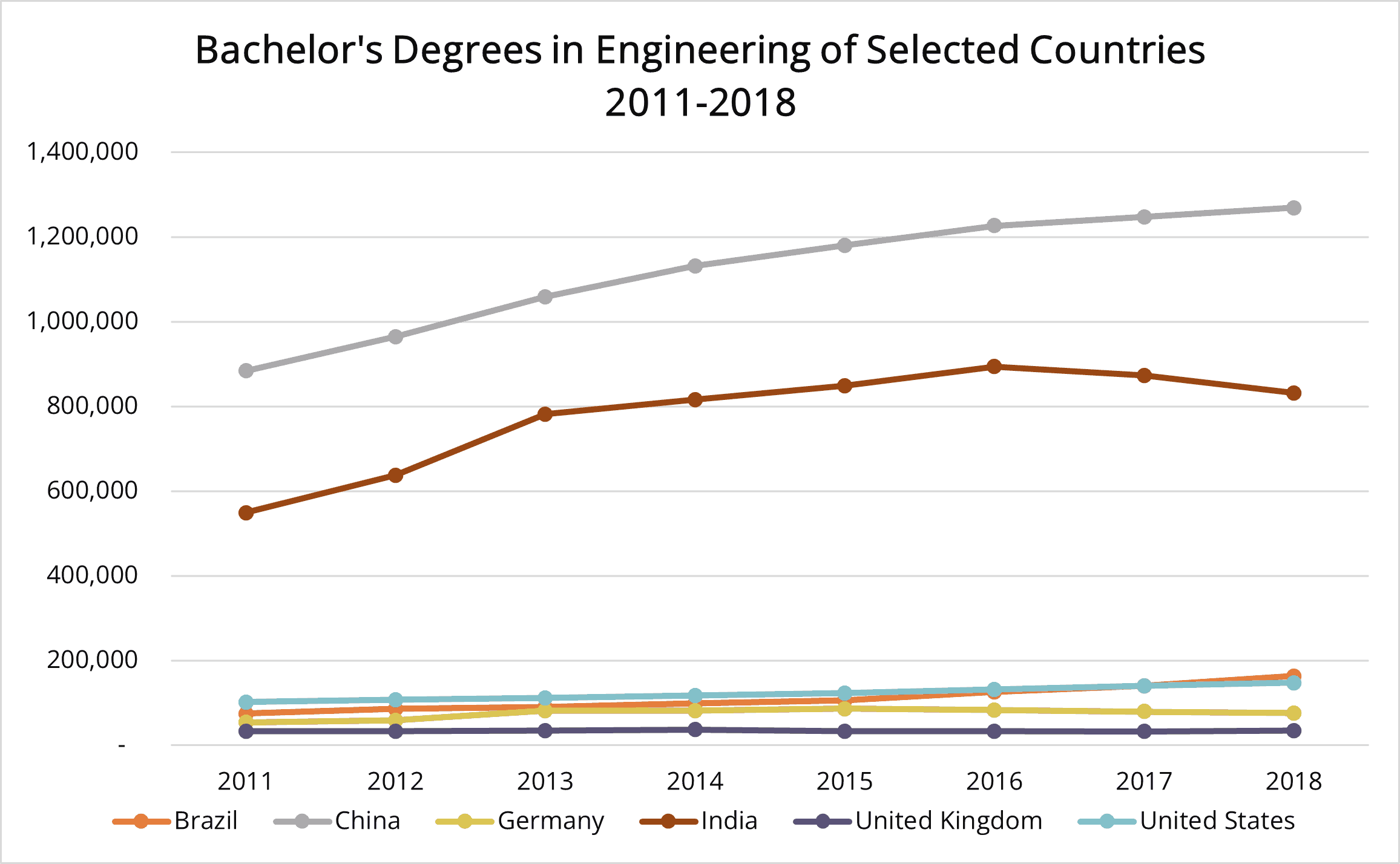
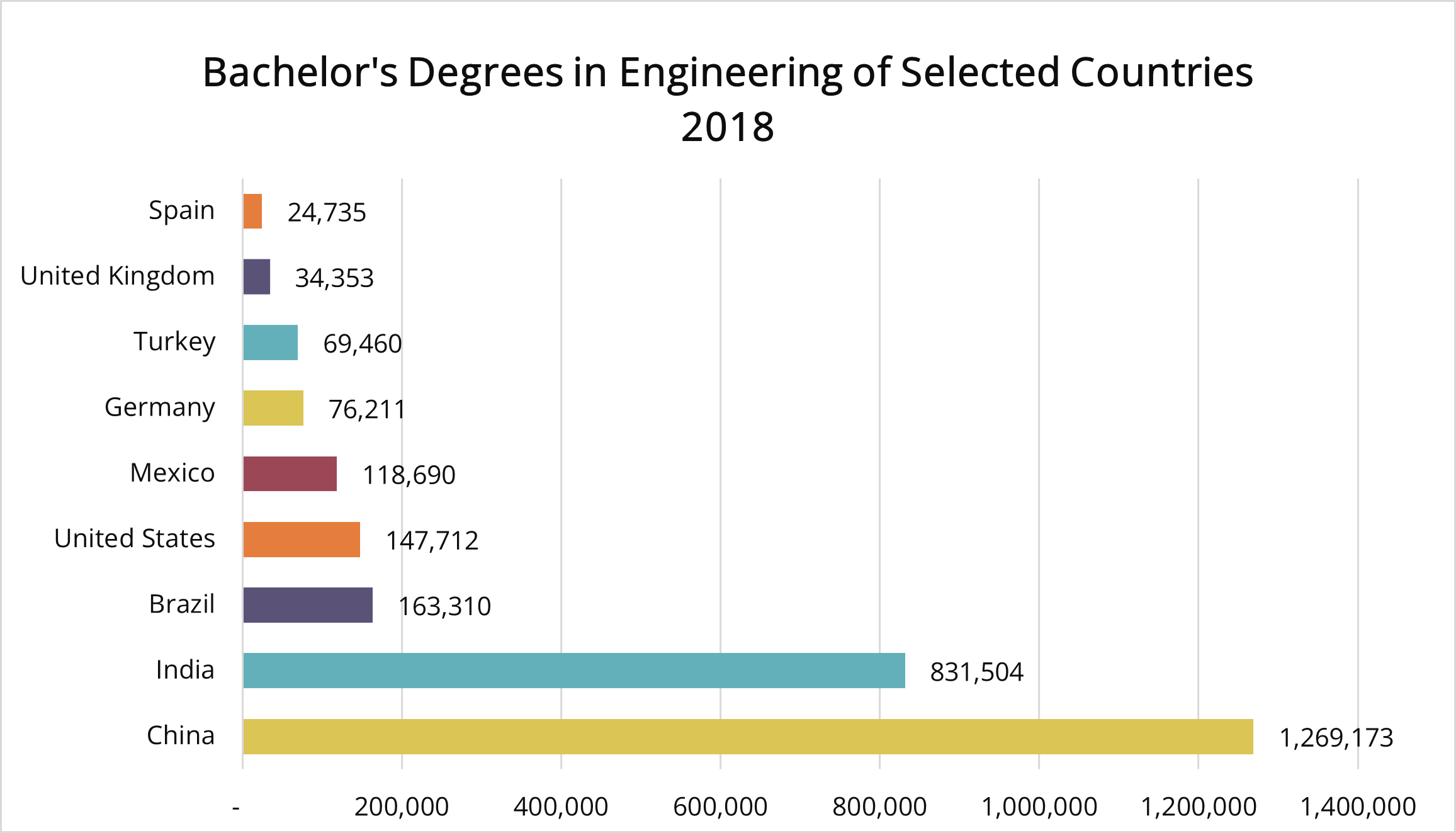
Globally, in 2020, a larger proportion of men than women received bachelor’s degrees in engineering, manufacturing, and construction (EMC), according to an analysis of the gender distribution of engineering degrees from The Organization for Economic Cooperation and Development (OECD) education data. That year, 26.9 percent of women in OECD countries were awarded bachelor’s degrees in these academic programs. In our sample of countries, Brazil conferred the highest proportion of degrees (37.1%), while Japan (15.5%) and Germany (17.8%) had the lowest proportion of women graduates.
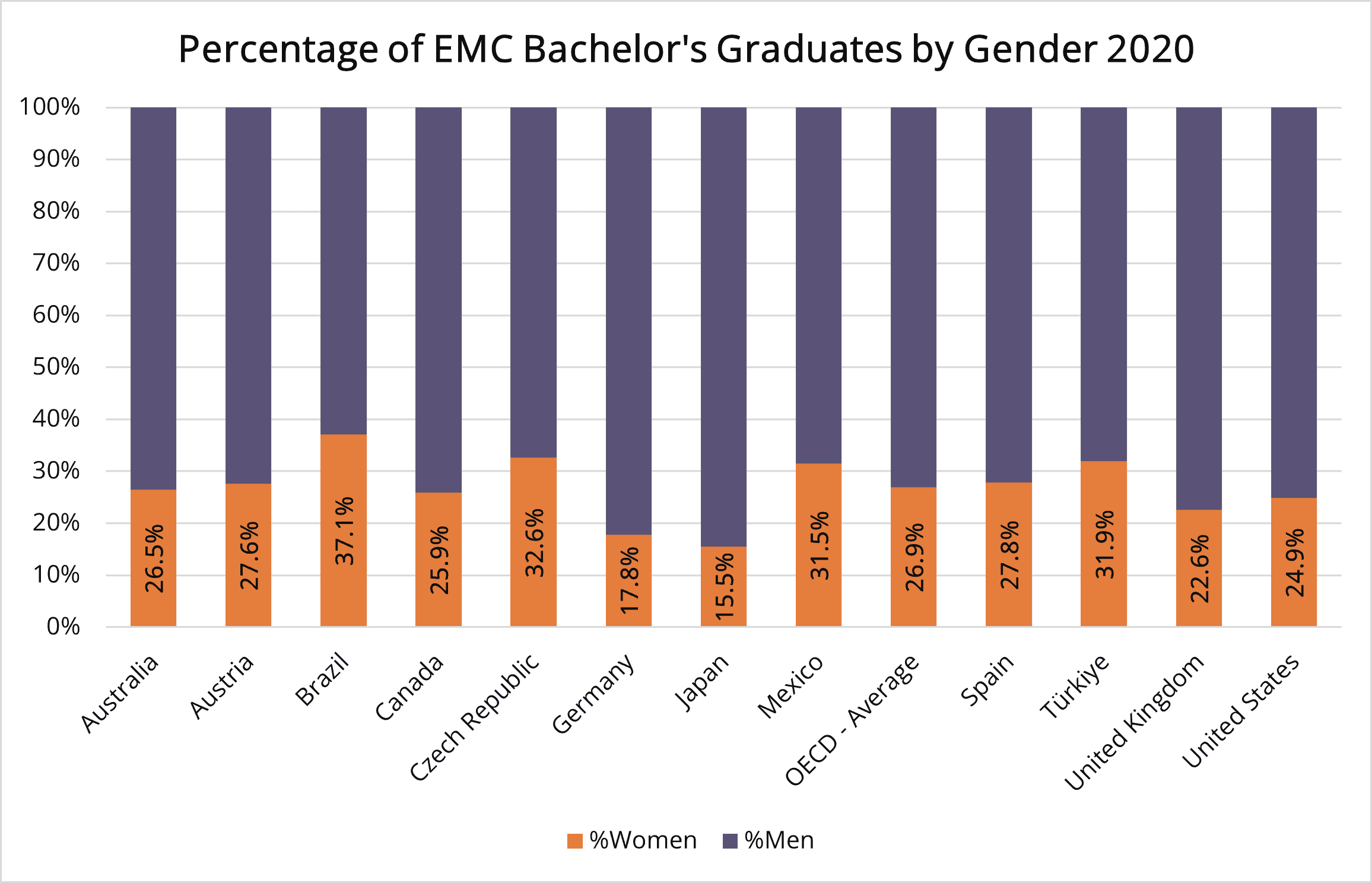
Similarly, in information and communication technologies academic programs (ICT), women comprised less than half of the bachelor’s degrees awarded in 2020. The average proportion of women graduates from the OECD was 20.7 percent. Türkiye and Mexico had the highest percentage of women obtaining an ICT bachelor’s degree at 29.7 percent and 27 percent, respectively. The countries with the lowest rate of women graduating with bachelor’s degrees in these academic programs were Spain (13.6%) and Brazil (14%).
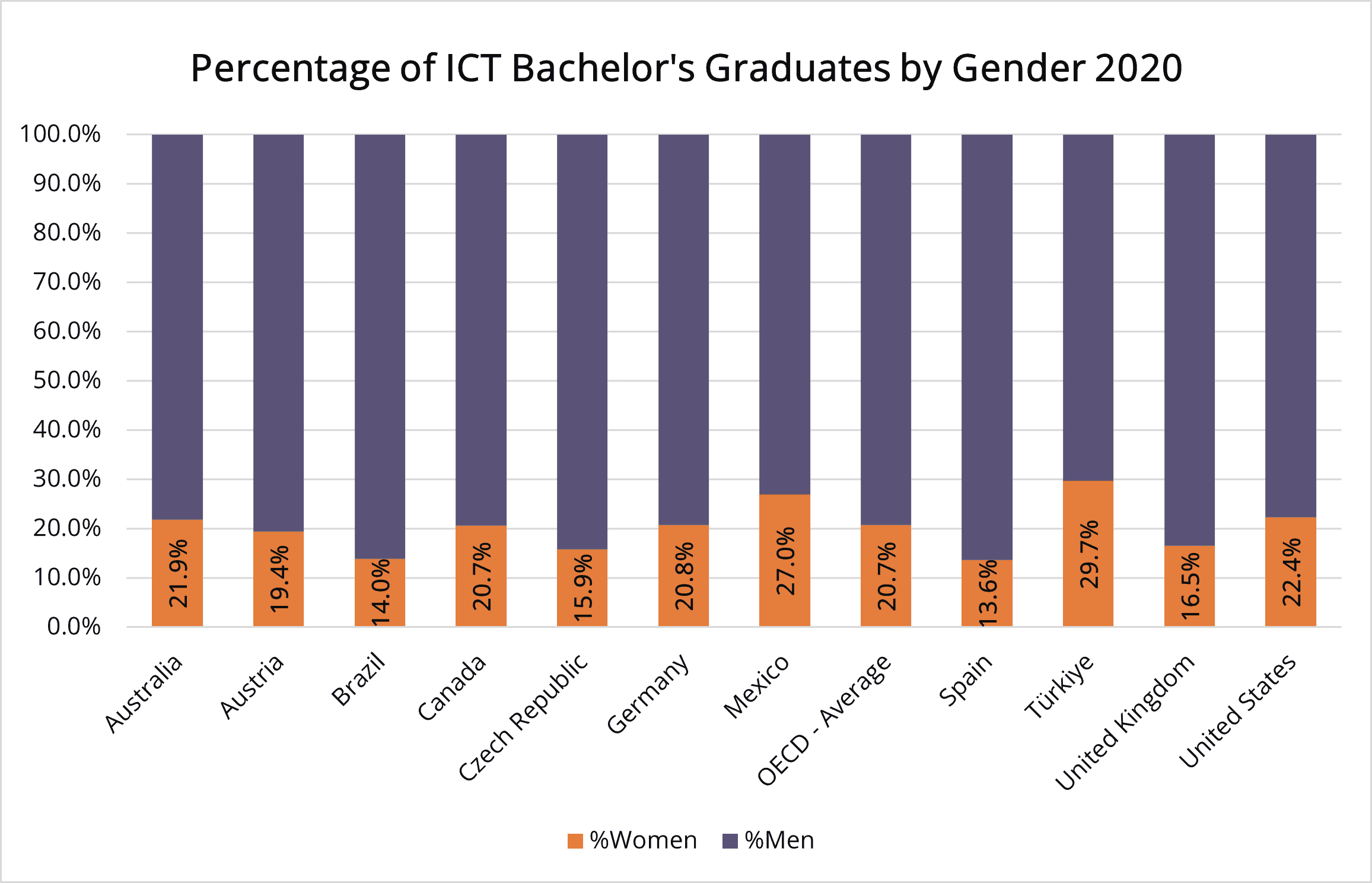
Global Graduate Degrees
The National Science Board’s Higher Education in Science and Engineering Report (2022) shows that from 2010 to 2018, there has been an increase across several countries in the number of engineering doctoral degrees. Still, the United States outperforms most selected countries in the number of engineering doctoral degrees and information awarded since 2001. Specifically, in 2018, universities in the United States awarded over 11,000 Ph.Ds in engineering. Chinese universities awarded more than 22,000 engineering doctoral degrees in that same year.
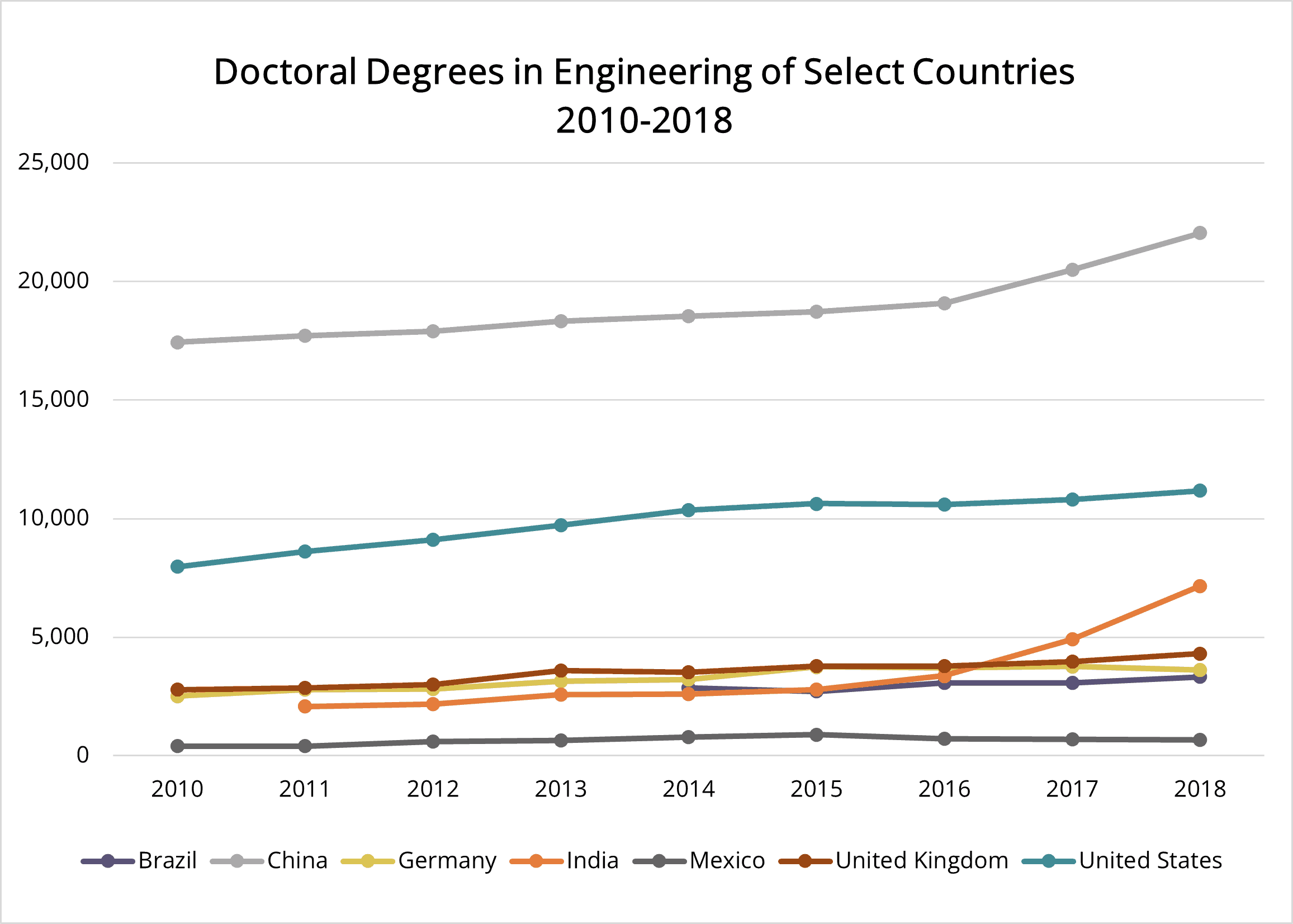
Earned Engineering Doctoral Degrees in Selected Countries by Gender 2020
The percentage of women graduating from doctoral programs in engineering, manufacturing, and construction (EMC) programs and information and communication technologies (ICT) programs varies between countries. However, data from the Organisation for Economic Co-operation Development (OECD, 2023), indicates a smaller percentage of women earn doctoral degrees in these two fields than their male counterparts. In 2020, Brazil awarded 43.9% of its EMC doctoral degrees to women, followed by Turkey. Of the selected countries in 2020, Turkey awarded 35.7% of their ICT degrees to women, followed by Australia at 27%. Analyzing the gender disparity in engineering degrees occurring globally is necessary for promoting diversity, innovation, and economic equality. By addressing these disparities, we work toward a more inclusive and equitable society, maximizing the potential of all individuals, regardless of gender.
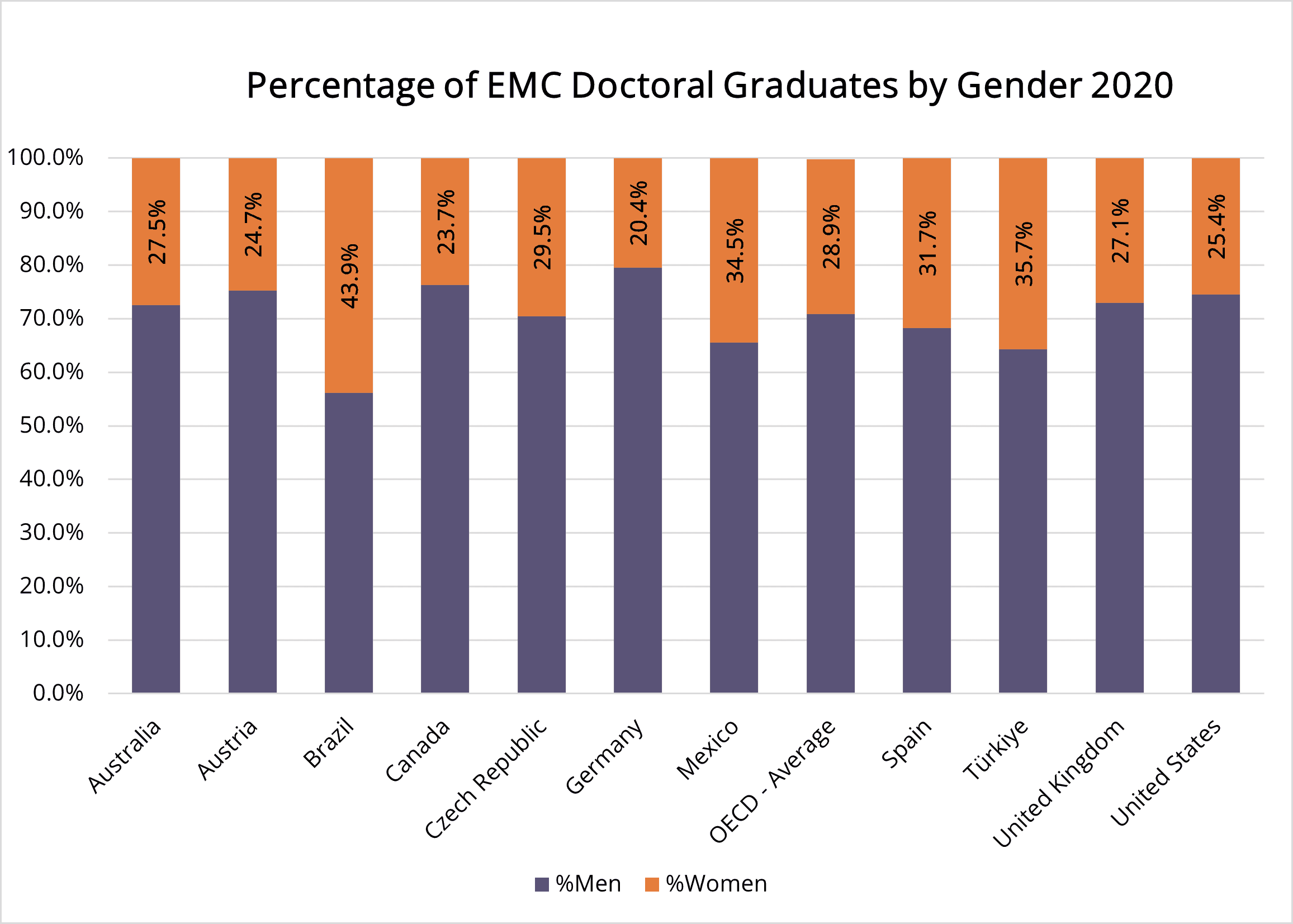
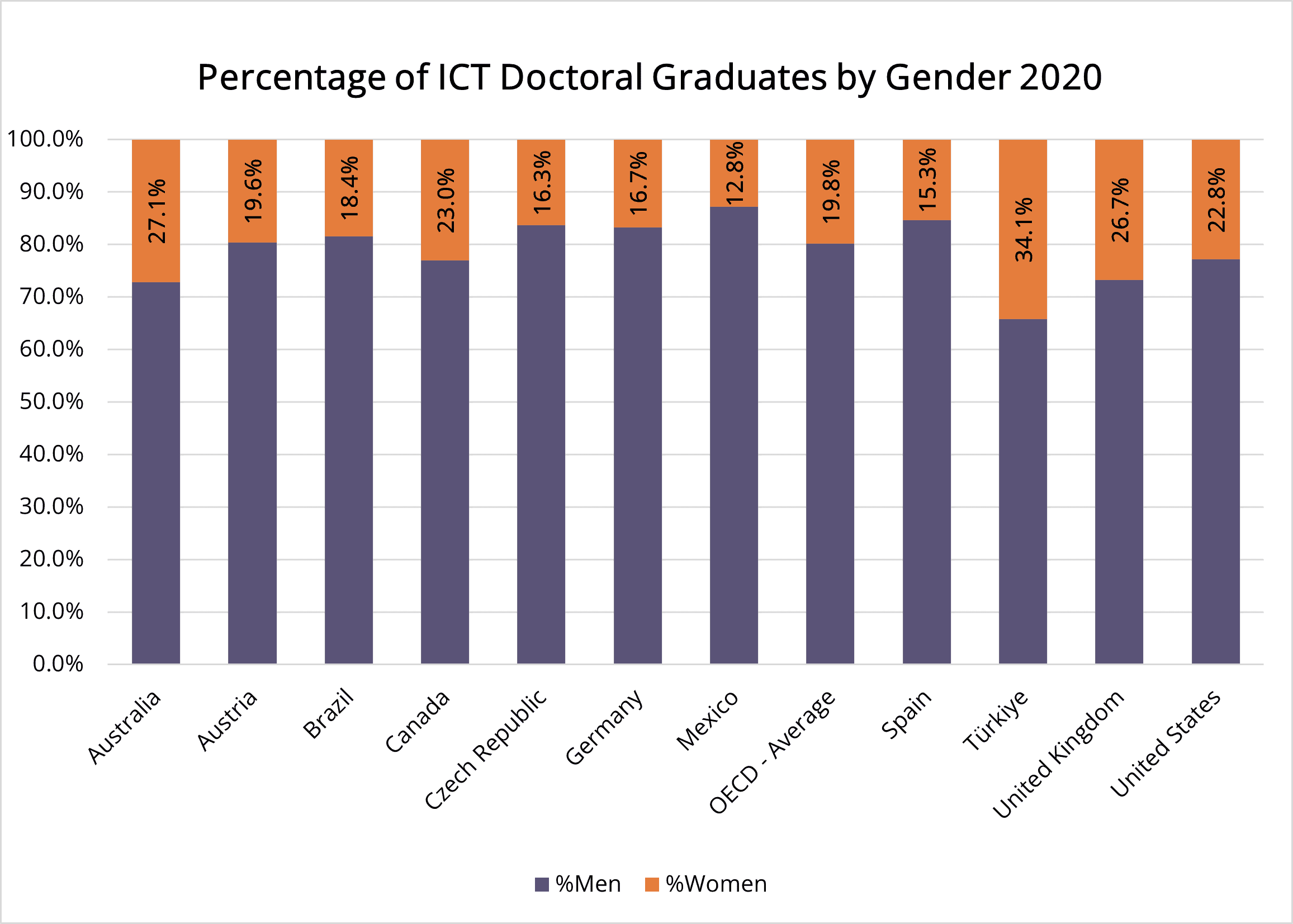
Additional Resources
- National Science Board. 2022. Higher Education in Science and Engineering. Science and Engineering Indicators 2022. NSB-2022-3.
- OECD (2022), Education at a Glance 2022: OECD Indicators, OECD Publishing, Paris,